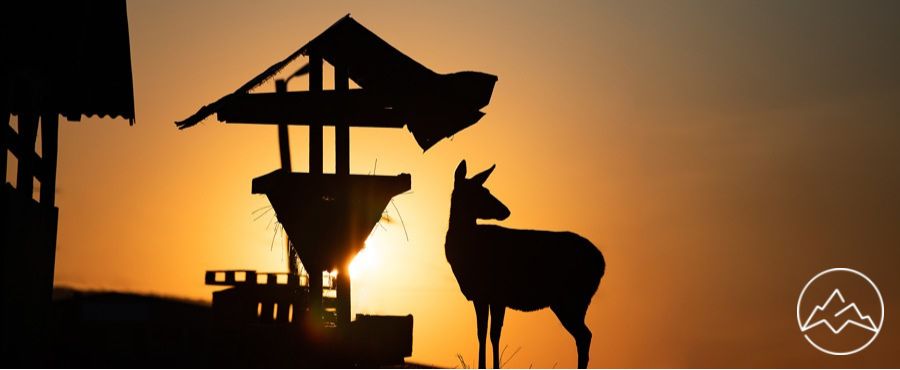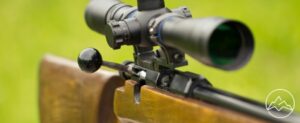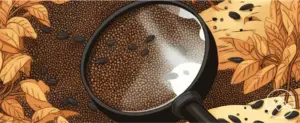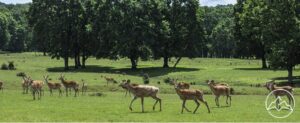Hunting turns into quite an expensive hobby, both upfront and over time. It requires a lot of equipment, apparel, optics, feed plots, and other pieces of equipment. It also involves a lot of time and dedication, effort, and a little bit of luck.
If you hunt all year round, you probably need to double down on the list above, which becomes even more expensive. One way to cut down on costs while also improving your luck is to make your very own DIY deer feeder.
In this article, we’re going to talk about the benefits of a homemade deer feeder and the various types you can make.
Why make a homemade deer feeder?
Aside from the reasons listed above, store-bought deer feeders are pricey. Your reasoning for wanting to invest in a deer feeder in the first place probably has to do with the lack of acreage on your property or budget to plant deer food plots. Or, you just want a simple way to attract more deer.
Deer feeders make a great alternative to attracting deer to your hunting grounds, and fortunately, making your own is a pretty simple project. Let’s take a look at the various types of budget DIY deer feeders and what goes into making them:The trough table
The trough table is the most common among deer feeders. The design is pretty straightforward, and it allows the deer to see around the area while they feed. The only cons to this design are that you’ll need to refill it often, and it’ll be exposed to the elements and other animals in the area.
The easiest way to mimic the trough table’s design is to build a table—preferably from wood—with deep edges that hold in the grains or corn. From there, you can create an upper square structure out of wood, or use plastic bins or buckets to hold the feed. You just need to make sure they have holes at the bottom that allow the feed to empty into the trough via gravity.
You’ll want to be sure to fix your feed assembly in the center. You’ll also need to build a roof that protects the feed from rain or snow.
The gravity feeder
The gravity feeder works like the trough feeder, only the design is much more straightforward, and it’s typically fixed to a tree or pole. There are different styles of gravity feeders, but it all comes down to preference and, of course, your budget.
The most common gravity feeder is typically built with a long and wide PVC pipe with a cap at the top and either a 90 or 45-degree elbow attachment. The deer will feed from the elbow’s opening while gravity will continuously pull down the stored feed.
Using the 90-degree elbow attachment is referred to as the “L” shaped feeder, while the 45-degree elbow attachment is referred to as the “Y” shaped feeder. Additionally, you’ll want to create tiny drain holes at the very bottom to allow any rainwater to escape so the feed won’t get soggy and begin to mold.
You can apply the same concept to a five-gallon utility bucket with a PVC elbow attachment. All you have to do is cut a hole in the bottom of the bucket and attach the elbow. Just be sure to keep a lid on the top of the bucket to keep out rainwater.The tripod feeder
The tripod feeder consists of a large barrel with a lid that sits atop three legs for a broad base of support —like a tripod. They’re perfect for attracting more deer at one time, and they allow a better view for the deer while they feed, which adds to their security.
You’ll need to cut one (or a few) holes in the bottom of the barrel and fix some form of feeding spouts to each hole. You can use PVC elbows, metal fixtures, or anything you find that resembles a spout. The feed is poured into the barrel from the top, and gravity takes care of the rest.Tripod feeders are meant to be on the larger side, so you may need a ladder to get to the top to refill the barrel.
The alfalfa feeder
The alfalfa feeder is held up by two beams, with a trough-like fixture that catches any loose alfalfa while the deer feed.
To assemble the alfalfa feeder, you’ll need a 50-gallon plastic bucket cut down the middle, vertically. These two pieces serve as the trough table and the covering. Fix the two halves of the barrel around your two 2×4 beams at around three feet apart. You’ll want to cut holes in the trough part so that you can fit the beams through.
Use a sturdy mesh wire to form your “V” shape structure to hang the alfalfa. Fix it to the top of the barrel, leaving enough room for the deers to fit their head underneath.FAQs about Deer Feeder Plans
What types of materials are typically used when constructing a deer feeder?
What factors should be considered when deciding on the size and shape of the feeder?
Are there any safety risks associated with using deer feeders?
Is it necessary to use a weather-resistant material for the construction of a deer feeder?
Are there any regulations or permits that must be obtained before installing a deer feeder in certain areas?
Deer licks make great alternatives
If the above DIY deer feeders are still out of reach, you can get away with concocting a simple deer lick attractant instead. All you need to do is boil together brown sugar, butter, and salt to form a hard candy.
Check out our guide on making your own deer salt lick
While it’s cooling, you can fix it to an eye hook that you can thread and hang on a low-hanging tree branch. No matter what type of feeder you construct, you’ll soon have more deer than you can count stopping by for a nibble.











